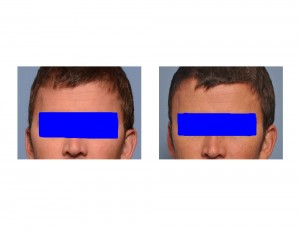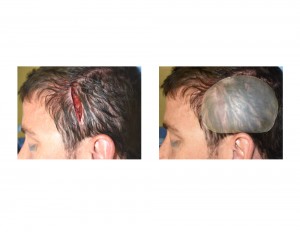Background: The shape of the head has many aesthetic components to it not unlike that of the face. While no area of the head as the degree of aesthetic complexity that the face does, that does not mean that cosmetic concerns about specific areas of the head do not exist. They are less well known and treatments for them are even more obscure but public perception is increasing. The popularity of shorter haircuts and men shaving their head has given rise to an increased awareness of head shape concerns.
One aesthetic area of the shape of the head that is rarely discussed from a diagnosis or treatment corner is that of its width. The width of the head is created by the sides of the head which run from the superior attachment of the ear up to the temporal line of the skull. This area lies within the hair bearing area of the broader temporal region and is only composed of muscle (and fascia) and bone. While many think its shape is largely caused by the shape of the temporal bone, the reality is that the temporal muscle makes a greater contribution to its thickness than that of the bone.
While there are no truly established aesthetic standards for the sides of the head, some general guidelines can be used. A straight line or flat side of the head would be viewed by most as being too narrow. Conversely a significant arc or amount of convexity would be thought of as being too wide. It appears that a slight amount of temporal convexity is the most aesthetic shape when viewed from the front.
Case Study: This 35 year-old male had an underlying congenital skull deformity (most likely occipital plagiocephaly) which has been previously treated by occipital and anterior temporal augmentation. His lone remaining head shape issue was that he felt the very sides of his head were too narrow, more so on the right side than that of the left.

His postoperative results showed a noticeable but not overdone head widening effect. The slight increase in temporal convexity gave his head a more pleasing shape with the noticeable fullness. He had no discomfort or restriction in opening his mouth after surgery as has been my experience with all subfascial temporal implants at either the anterior or temporal location.
Highlights:
1) The aesthetics of the side of the head generally have some degree of convexity or can appear as too narrow.
2) Subfascial posterior temporal implants can be placed to create an increased amount of head widening.
3) Generally 4 to 7mms of head width is all that is needed on each side to create a very noticeable difference.
Dr. Barry Eppley
Indianapolis, Indiana



